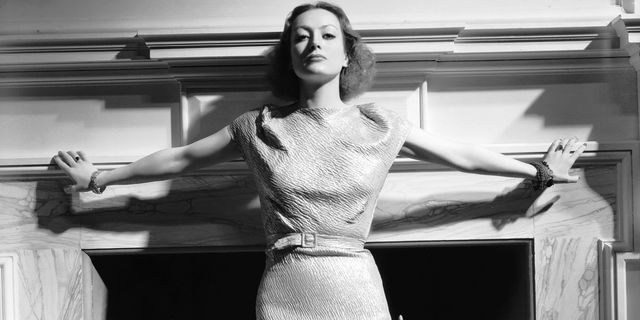We're all for glamorous ladies here at Favourbrook, and if there was ever a star we would have loved to have dressed, it has to be the beautiful and supremely talented Joan Crawford. She actually hated her stage name - it was given to her by a public vote can you believe?! She was born Lucille Fay LeSueur in 1905, in San Antonio, Texas, and along with her siblings, was brought up by in a single-mother household. Her career began as a dancer in chorus lines before transitioning to silent films in the 1920s, which saw the beginning of a movie career that would span over five decades.

It was in the 1930s that Crawford truly rose to prominence, becoming one of MGM's biggest stars. Known for her striking beauty, intense screen presence, and dedication to her craft, she delivered memorable performances in films like "Grand Hotel" (1932), "Sadie McKee" (1934), and "The Women" (1939). Her collaboration with director George Cukor in films such as "Our Blushing Brides" (1930) and "The Women" solidified her status as a leading actress of the era.

In the 1940s, Crawford continued to excel, earning critical acclaim and industry recognition for her portrayal of the title character in "Mildred Pierce" (1945) which earned her an Academy Award for Best Actress, cementing her reputation as a dramatic powerhouse. She followed this success with notable roles in films like "Possessed" (1947) and "Sudden Fear" (1952).
Crawford's career experienced a resurgence in the 1950s and 1960s with her transition to more mature roles. She embraced the psychological thriller genre, starring in films such as "Whatever Happened to Baby Jane?" (1962) alongside Bette Davis, marking one of cinema's most legendary on-screen rivalries.

Off-screen, Crawford was known for her strong-willed personality and meticulous attention to her public image. She was a savvy businesswoman who actively managed her career and image, often collaborating with photographers and journalists to craft her persona.
One of her most important collaborations, and which turned into a life-long friendship, was with the costume designer Gilbert Adrian. Their partnership was marked by mutual respect, creative synergy, and a shared commitment to enhancing Crawford's on-screen persona through fashion.

Adrian was one of Hollywood's most esteemed costume designers, and Crawford naturally became his muse. Their collaboration began during Crawford's tenure at MGM Studios in the 1930s, where Adrian served as the chief costume designer. Their partnership reached its zenith during this period, with Adrian crafting iconic looks for Crawford in some of her most memorable films, most notably in the film "Letty Lynton" (1932), where Adrian designed a glamorous white organdy gown with exaggerated puffed sleeves, commonly referred to as the "Letty Lynton dress." The dress became a sensation and sparked a nationwide fashion trend, showcasing Adrian's ability to capture the zeitgeist and Crawford's influence as a style icon. The famous costume designer Edith Head once said that it was the single most important fashion influence in film history.

Their collaboration continued through numerous films, including "Dancing Lady" (1933), "Sadie McKee" (1934), and "The Bride Wore Red" (1937), among others. Adrian's designs not only complemented Crawford's performances but also played a crucial role in shaping her on-screen characters and enhancing the narrative. Their collaboration extended beyond the confines of the studio, with Crawford often wearing Adrian's designs to public events and premieres, further cementing their association in the public consciousness.
Born in 1903, in Naugatuck, Connecticut, as Gilbert Adrian Greenburg, he later adopted the professional moniker Adrian. His designs were characterised by their elegance, innovation, and attention to detail. He had a keen understanding of character and narrative, using costume to enhance storytelling and develop character archetypes. One of his most iconic creations was the ruby slippers worn by Judy Garland in "The Wizard of Oz" (1939), which became a symbol of the film's enduring legacy.

Adrian's influence extended beyond the silver screen. He was instrumental in popularising certain fashion trends, such as the shoulder pad, which became synonymous with the power dressing of the 1940s. It's thought that this idea came from dressing both Crawford and Greta Garbo, both of whom had broad shoulders. After leaving MGM in 1941, Adrian focused on his own fashion line, catering to high-profile clients and continuing to push the boundaries of design. He remained active in the industry until his passing on September 13, 1959, leaving behind a legacy of creativity and innovation that continues to inspire costume designers and fashion enthusiasts to this day.












